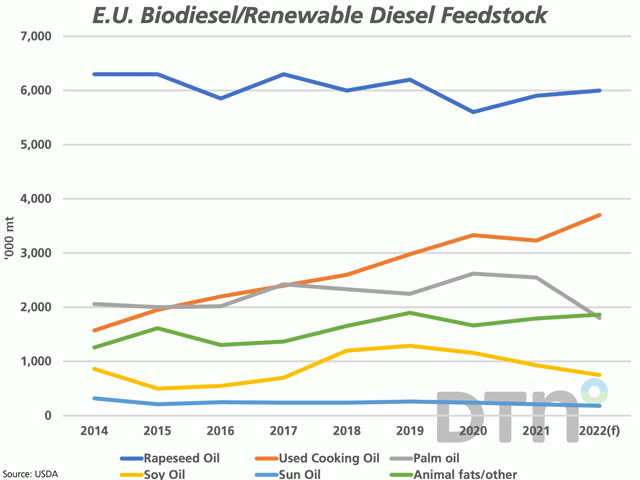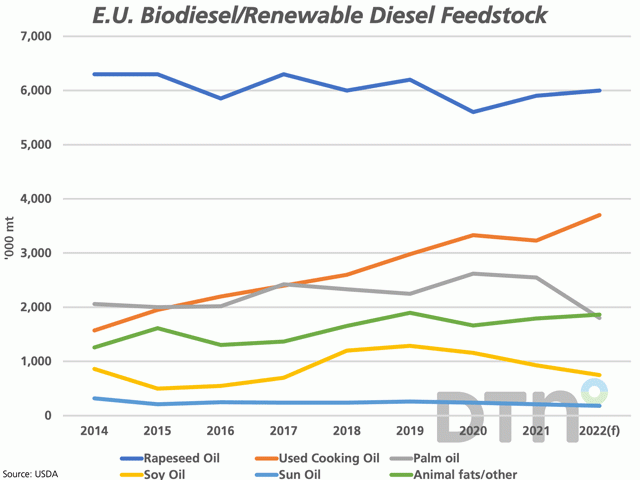Canada Markets
EU Biodiesel/Renewable Diesel Feedstock Forecast
The USDA's Foreign Agricultural Service European Union Biofuels Annual reports that EU biodiesel consumption rose 3% in 2021 to a record level due to a combination of increased mandates and the easing of COVID restrictions that led to an increase in transportation.
Consumption in 2022 is to remain flat in 2022, with the USDA forecasting an increase in blending mandates and a continued decline in COVID-related issues offset by declining demand due to higher fuel prices, supply/demand imbalances and the effects of the Russia-Ukraine conflict. Further long-term risks to demand also exist as the war has rekindled the food-versus-fuel debate, with Germany mentioned as a country that is studying the potential to end the use of crop-based feedstocks over time.
P[L1] D[0x0] M[300x250] OOP[F] ADUNIT[] T[]
Feedstock data provided for the 2014 through to the forecast for 2022 shows vegetable oil use falling by 8.5% during the period, which includes the total volume of rapeseed oil, palm oil, soybean oil and sunflower seed oil. The alternative feedstock is sourced from used cooking oil (UCO), animal fats and "other" category, which combined has risen by 96.6% in volume during the same period. The largest rise is seen in UCO, which is forecast to strengthen 135.7% during this eight-year period, as seen by the upward-sloping brown line on the attached chart.
The dark blue line above all others represents the use of rapeseed oil. While not shown, rapeseed oil is reported to have reached its peak in 2008, accounting for 72% of total feedstock used, while falling to 40.4% in 2021 and forecast to make up 42% of the total feedstock in 2022. Of the vegetable oils shown on the attached chart, rapeseed oil is forecast to fall by 4.8% during this period, the smallest drop seen across the vegetable oils shown, linked to the competition from competing feedstocks.
This forecast will be challenged by the EU's ability to access rapeseed exports from Ukraine, while Canada's potential rebound in canola production may leave the country well-positioned to boost exports.
Cliff Jamieson can be reached at cliff.jamieson@dtn.com
Follow him on Twitter @Cliff Jamieson
(c) Copyright 2022 DTN, LLC. All rights reserved.






Comments
To comment, please Log In or Join our Community .